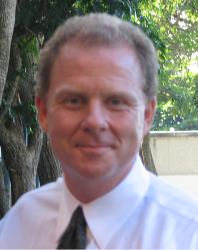I love it when a few unrelated things happen close enough together that they get to have an unexpected synergetic result. The most recent occurrence of this for me happened over the course of the past week but I only put it together while out running yesterday. The three things at play were:
- I read Beth Kanter's and Allison Fine's new book, The Networked Nonprofit, on my flights to and around Australia (I highly recommend the book even if you think your organization is already working well with social media)
- Three presentations were cancelled at the last minute at the Volunteering Australia conference.
- I was asked about helping organize a conference and that got me thinking about what I thought worked well an not so well at the VA conference
2. Cary Pedicini (CEO at Volunteering Australia) told me that they were so overwhelmed with offers to fill the cancelled sessions that they could not consider them all and were as a result just going to leave sessions as cancelled. (They were after all in the middle of running a conference.) Far too late for it to be of value to the conference I had the idea that we could have used Twitter to crowd source a selection from the numerous people that offered to fill the slots. (V.A. did a great job of incorporating Twitter into the conference for the benefit of onsite and offsite participation.)
3. Although some of the sessions were quite interesting, I felt that some of the workshops missed the mark in delivering content of real interest and value to leaders of volunteers. In his closing remarks Cary acknowledged this had been some of the feedback that they had received and reminded us that where this happened it was not for a lack of trying on the part of the V.A. team. ( I am not being particularly critical of the V.A. conference here. I imagine this to be a challenge of the selection committee of any conference.) That they tried hard to make the program as good as it could be is a important point though. If trying hard is not the only requirement for success, what else could help?
So as a variety of thoughts bounced around in my head while running, when the three above happen to collide, this what came to mind...
Why not let the people who are planning to attend a conference (or even the one hoping to but awaiting approval) be the ones to select the majority of the conference program? There are a few reasons why I suspect that the conference committee should still have the capacity to add ones they see as particularly relevant to the the conference theme or anything else. But even this idea might end up getting challenged in time as conferences experiment with this concept.
Session proposals could be entered online and then those who plan on coming to the conference could register their intention to do so, even if still awaiting approval, and then vote on the sessions they would like to attend. Session proposals could include a field indicating the minimum number of participants required for the proposer. Although I have not yet thought through all of the logistics yet, I can easily envision cases where even though a presentation is only of interest to a few people that the presentation could still go on, even if over a coffee in a cafe rather than in a traditional meeting room. Give that most of this is distributed data entry (proposers rather than conference committee) that could be used on the real conference registration form as well, and also given that the conference participants rather than the conference committee make the program selection, this would reduce the amount of work required by a conference committee while potentially creating a conference program more in line with what the conference participants seek. This does put another task on managers of volunteers who are already busy but it's an optional one and it does give people a real voice in the conference agenda.
Please offer your comments on other possible challenges and/or on what you like about it. Given the nature of participant involvement that is at the root of this, your feedback on this concept would be greatly appreciated.
